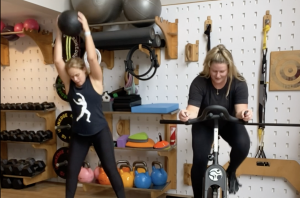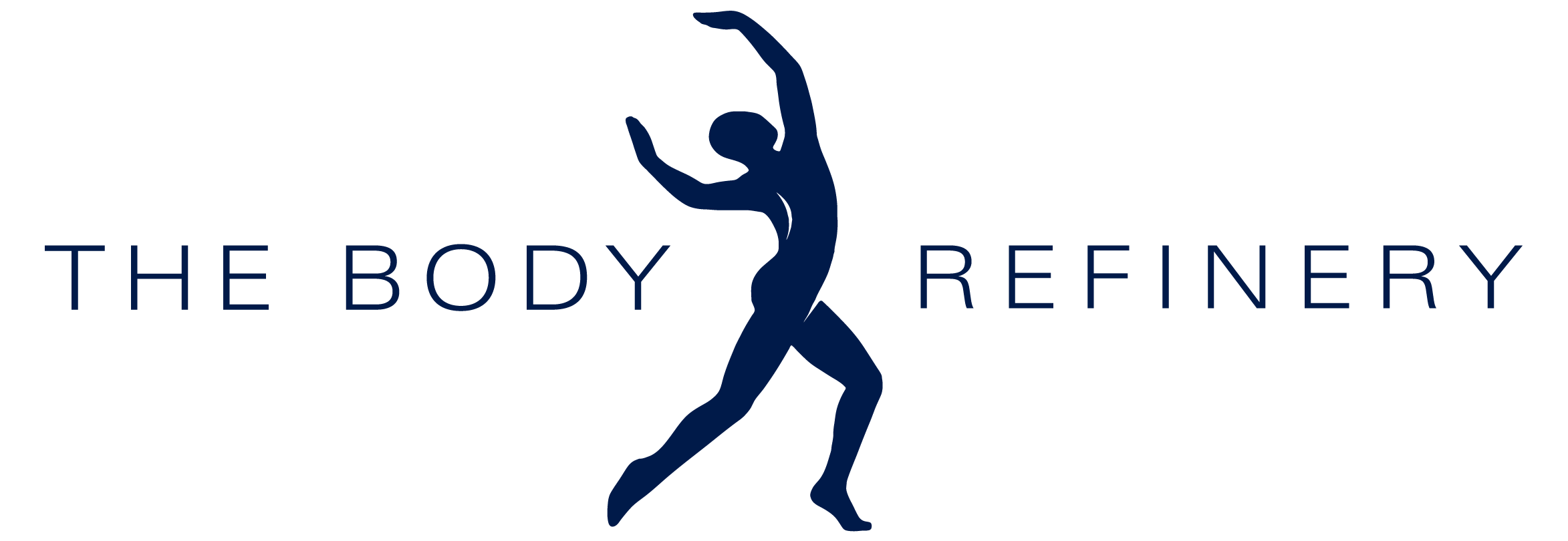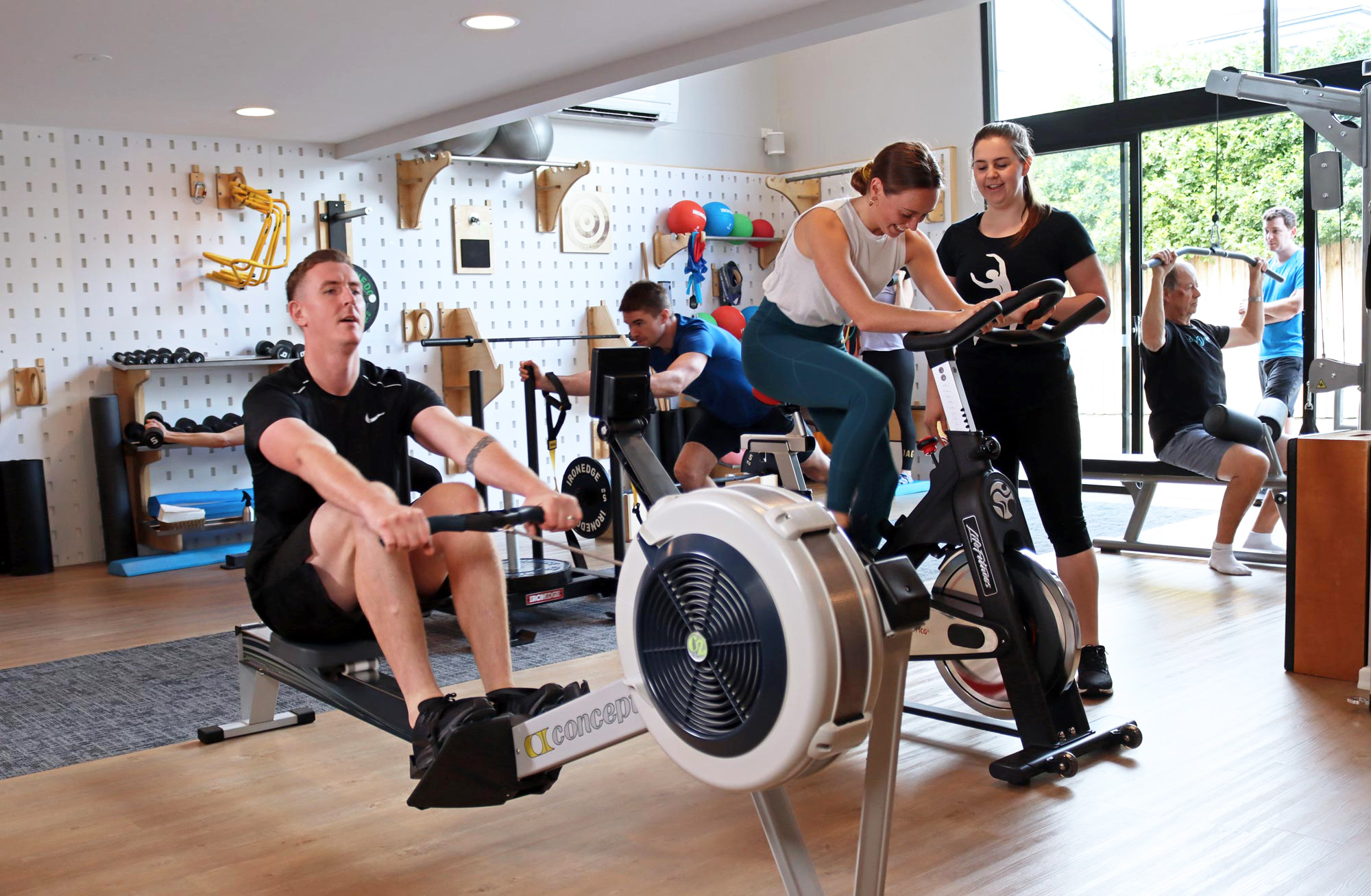On a treadmill, elliptical, or one of our numerous group fitness classes there are plenty of options to get your cardio fix.
If you enjoy it by all means “cardio on” but if you are skeptical here are some facts to help you understand how it is important to work its cardio and make your cardiovascular training more efficient and effective!
The Cardiovascular System
- The cardiovascular system, also called the circulatory system, is a vast system that transports oxygen, nutrients, hormones, and metabolic products throughout the entire body. It includes the heart, arteries, veins, capillaries, and lymphatic system and has been estimated to be as long as 100,000 km. The average person has 4.7 to 5.7 liters of blood and the heart pumps this volume every minute at about 70 beats per minute, pumping around 7600 liters of blood a day at rest! The primary role of the cardiovascular system is to provide oxygen to your cells while removing carbon dioxide. As the heart pumps, its moves blood to the lungs where it picks up oxygen and continues back to the heart to be pumped back out to the rest of the body. The oxygen in the blood is taken up by your cells for energy while carbon dioxide produced by the cells is picked up and expelled through the lungs. The blood and cardiovascular system are also important in regulating body temperature and transporting the cells of your immune system around the body.
Understanding Cardio
- There are 2 primary forms of cardiovascular training, aerobic and anaerobic. Aerobic means that the body is utilizing oxygen to produce energy whereas anaerobic does not. Typically, when the term “cardio” is used, this is referring to aerobic training. With aerobic training, the body primarily burns fats for energy. With anaerobic, the body primarily burns carbohydrates. This has led many people to believe that aerobic training is superior to anaerobic for fat loss. In reality, anaerobic training, especially high-intensity interval training (HIIT), has been shown to be superior for fat burning. This is because of a series of adaptations to higher-intensity exercise. The body responds by elevating its metabolism for up to 72 hours which means that it will continue to burn fat long after you stop exercising. Of course, there are benefits to both styles of training, and which one you focus on will depend on your specific goals.
Strengthens the Heart
- With training, the heart becomes stronger and more able to pump blood throughout the body. This is one of the primary reasons why cardio training is so important. The heart is a muscle (one of the strongest and most resilient you have), and like other muscles in your body, it adapts to the training stimulus. The muscle cells of the heart, called cardiomyocytes, become larger to compensate for the increased demand placed on them. This is referred to as cardiac hypertrophy. This increase in size allows them to generate more force with each beat of the heart. The majority of this increase occurs around the left ventricle which is responsible for pushing blood throughout the body. The chambers of the heart also become slightly larger and more flexible, allowing more volume of blood for every pump. This increases what is called the Frank-Starling mechanism which utilizes the elastic ability of the heart to increase the amount of blood pumped. All of these adaptations make your heart healthier and improve overall health and performance as well as longevity.
Improves our Resting Heart Rate
- The amount of times our heart beats while we are at rest is called our resting heart rate. A peculiar adaptation occurs with training where the resting heart rate actually lowers. This is called the athlete’s heart. Although this sounds bad at first glance, this is actually a very good thing. If the heart can beat less while still maintaining the same output, that means that it will save itself from tiring and degrading earlier in life. Imagine that the heart has a finite amount of beats in a lifetime, if you can make it beat less, then you can extend the duration that the heart can continue. On average, a person’s heart beats at about 70 beats per minute. Elite athletes have measured resting heart rates below 40! That means that the heart beats 30 fewer times in a minute than the average person. Imagine how many beats your heart is saving over your lifetime. This is possible because of the increase in the output of the heart, called stroke volume. It is also believed that there is an increase in your parasympathetic nervous system, known as the rest and digest stimulation, which helps us relax and lowers our heart rate.
 Improves Blood Pressure
Improves Blood Pressure
- Cardio training can reduce and normalize blood pressure which is especially important for people with hypertension (high blood pressure). Many people today suffer from this condition and it’s likely you or someone you know has it. This occurs through a variety of mechanisms. For starters, exercise stimulates an increase in blood flow in the peripheries by utilizing the muscles to create a pumping action for the veins. This mobilizes blood and helps open up the vessels that may be closed and prevent circulation. Another amazing mechanism is something called angiogenesis. This is the production of brand-new capillaries, the small vessels that transport nutrients to and from the cells. With more capillaries, we increase the available volume for blood which lowers the overall pressure in the circulatory system. Lastly, another benefit of cardio training is a temporary reduction in blood pressure post-exercise which can last up to 12 hours. All of these positive adaptations help increase health and performance and also help prevent future cardiovascular disease.
Improves Cellular Function OR Increases Red Blood Cells and Mitochondria
- Nearly all our cells are reliant on oxygen to produce the required energy necessary for them to survive and maintain their function. This oxygen is transported through the body in our red blood cells (RBC’s), the primary component of the blood. Training increases the synthesis of RBC’s, meaning that we can now transport more oxygen to our cells which greatly improves our health and function. The body does this through a process called hematopoiesis, where signals from training induce the synthesis of more cells from the bone marrow. Along with the increase in RBC’s, training also stimulates the growth of more mitochondria. These are the powerhouses of the cells which produce energy from oxygen. Mitochondria heavily utilize fat as energy, and increasing the number of mitochondria means we also increase our ability to burn fat.
Makes You Feel Good!
- Many people who are avid runners often talk about getting a “runner high”. A feeling of energy, exuberance, and even happiness. Aerobic exercise and exercise in general cause the body to release various hormones as a response to the activity. Two of these hormones, serotonin, and dopamine, promote a feeling of happiness and pleasure. Some people get such a flush of these hormones that they experience these profound moments mid-exercise. In the long term, the more we exercise, the more we reinforce these hormone pathways. It’s no coincidence that people who are active and fit are often happy, glowing and full of energy. These psychological benefits don’t only stop with feeling pleasure and happiness, aerobic exercise also improves our brain health. Exercise has been shown to be neuroprotective, meaning that it helps prevent neurological degeneration and disease as we age. It also improves the brain’s ability to critically think and problem-solve, so if you’re keen to keep your wits, it’s important to maintain your exercise!
Strengthens the Lungs and Bones
- Beyond the cardiovascular system, cardio training also shows great benefits to other aspects of our body. The respiratory system, which comprises the lungs, is intimately linked with the cardiovascular system. As we exercise, aerobically or anaerobically, our demand for oxygen and nutrients increases as well as our demand to breathe out carbon dioxide. This is compensated for by the respiratory system increasing how much we breathe in and how many breaths we take. As intensity increases, so does our breathing. This trains the muscles that are responsible for respiration, increasing the function of our breathing. Outside the respiratory system, aerobic exercise like jogging or running and anaerobic exercise that taxes muscles is also excellent for improving bone density. The repetitive forces placed on the bones from small impacts and muscle pulling causes them to adapt and form harder denser bones. This helps protect against osteoporosis and fractures with aging.
At The Body Refinery, we have a number of services and Health Professionals that can assist you in improving your cardio and general fitness endeavors. These services include Physiotherapy, Exercise Physiology, Fitness and Pilates.
Our Pilates services are run by highly skilled and trained Pilates instructors who can tailor a program to suit your needs.
Our Physiotherapists also work with athletes in our Clinical Strength classes and our Exercise Physiologists will help you reach your goal through their Strength and Conditioning classes.
Or you can join our online Platform where our Instructors have added more than 120 workout classes including cardio and Hiit classes. Visit www.thebodyrefineryonline.com and join our online community.
Please call our friendly reception team today at 3358 3915 to discuss how we can help you!


